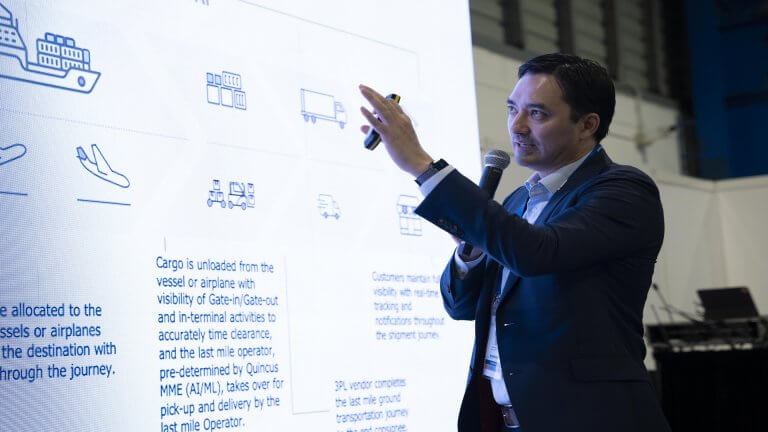
The importance of one-on-one mentorship
By Christophe Pennetier
“The main tenet of design thinking is empathy for the people you’re trying to design for. Leadership is exactly the same thing – building empathy for the people that you’re entrusted to help.”
– David M. Kelley
I’m currently conducting one-on-ones with my team. I’m reviewing myself as I review my team—very meta. En français, we call that “mise en abyme”. As a leader of an innovative research team, I believe in the power of one-on-one mentorship. Let’s explore how regular one-on-ones can ensure you and your team are proactive about workplace issues and on track for success.
Whenever I can, I like to challenge old nostrums. The worst adage regarding people management is “no news is good news.” Following this motto, managers wouldn’t conduct regular one-on-ones because everything would appear okay. Besides, if everything were okay, people would complain. Wouldn’t they? Early enough? Would those complaints be constructive?
Not likely.
Leaders should leverage monthly one-on-ones with each team member. Here are some rules that I follow to ensure you’re doing so effectively:
- Don’t miss a meeting. Make each one a priority.
- Opt for in-person meetings and dedicate one full hour to each session.
- Fuel your one-on-one observations using the following five ethnological “ways of being”.
Five elements to build productive team member relationships
These five ways of being lay the foundation for my management process. They’re loosely inspired by Genevieve Bell, whose work at intel to study “humanity” in a tech company I adapted into this simple framework for another population: business people managing scientists and brains. Scientists need attention, feedback, and to be challenged. For a manager, this situation is exhausting but simultaneously fulfilling. Let’s dig deeper into the five ways of being.
1. Be present: Engage, predict, empower
You can’t manage a sports team without knowing the field. Whether you work remotely or in person, you must leave your office and “expatriate” yourself. As a leader, you shouldn’t be dependent on Slack or Teams but should use these as tools when necessary. Your desk—with all its usual barriers and distractions—shouldn’t become your whole universe. Remotely, you need to adjust your plans to your team’s schedule, showing up when needed. One-on-ones give you the ability to mark milestone but shouldn’t be your only point of communication. Fill the gaps!
When in your one-on-one, don’t just watch; ask questions. You need to be a participant in your one-on-ones. You should be active and proactive during the conversation as you would be in a creative session. Start by turning your phone off or silencing incoming messages. Zero in and pick up on the accomplishments, minor hints of pride or frustration. Then, inquire about your employee’s needs. Finally, end off with a recap of to-dos to ensure you’re on the same page.
2. Be human
Relate to your team and show an interest in their individuality. This will help them feel seen and want to grow. Part of your position is about mentoring and directing, but a lot of your team’s performance and confidence can bloom when you show them you care. If you want to build a team of robots, that’s an option, too; however, most teams thrive on the human aspect: creativity, grit, and empathy.
You can catch these elements in the iconography and environments, the intangible sensory inputs like colors or sounds sprinkled in your team’s video backgrounds, personalities, laptop stickers, you name it. This builds culture. A picture, a snack, or a newspaper on a desk tells you more than the answers to most conventional questions. Read the same papers and magazines. Watch the same movies or TV series. Try their hobbies. Take notes.
3. Be vulnerable, embrace humility
As a manager, you don’t have all the answers. Don’t try to take credit for your employees’ successes and unfairly exploit the relationship during a one-on-one meeting. Of course, you can be active during the session, but it works if you are simultaneously open to people in front of you. If you ask questions, your employees should also feel open to doing so. Be truthful and open, not a gatekeeper to information, processes, decisions, or direction. Everything is about your company and its greater good. It’s counterproductive to retain information for the sake of bargaining power.
Finally, learn to shut up at the right time. Listen and be open. After all, you’re not an expert in your employees’ lives. Of course, you will feel uncomfortable, maybe off balance or overwhelmed. Don’t worry. This is a transitory state towards more profound insights and actions.
4. Be surprised
While you might be an expert in some regard, you’ve hired the talent for a reason. Managers should trust their experts and allow themselves to be surprised. Thinking you know exactly what’s going on during a one-on-one positions you to overlook or undermine something crucial. Challenge your assumptions and suspend your needs to make sense of it all. This goes along with micromanaging and nit-picking. If you take a second to hear your employee out, they’ll likely come full circle to explain the bigger picture. They might even figure out the issue themselves just saying it aloud. Try to be curious and—as a private investigator would do—write down what sticks and what does not.
One-on-ones are not the places of right and wrong. They are a time of trust where what happens there stays there—much like Vegas, but with smaller stakes. Young or not, you must be willing to ask questions that you might even think are “stupid questions”. More importantly, don’t limit your creativity for fear of being wrong. It’s an opportunity for your expert employees to correct you and reinforce exactly why you need them.
5. Be honest and brave
Of course, you still need to set a standard of accountability and set expectations for results. During and, more importantly, after the one-on-one, you need to be up-front. Don’t hide what you think because it’s too difficult to adjust behaviors and correct processes. Don’t take on extra work because it’s easier to take care of it yourself than offer constructive guidance. If you ignore issues, you may be unable to debulk difficult situations.
While I’ve said that one-on-ones are a time for trust, you should highlight specific sentences, impactful wordings, and nuances that come up “in-session”. Resist the urge to write a 20-word summary and instead set up a context—a timeline—for daily life at work. This will likely create more questions than answers, and these you can ask at the next session. Even if it may hurt your pride, don’t shy away from what you learn or beat around the bush regarding what you know to be best for your team and company overall.
A continuous analysis
The lapse between one-on-one sessions is time to reflect. Search for patterns, particular systems of meaning and knowledge. Don’t hesitate to read books, research articles, and absorb any available theory to help you have a clearer view of the situation.
What makes our era different is that people in leadership hear and listen—to team members, to minorities. From social movements to global catastrophes, it’s essential to consider the whole person that you’re responsible for supervising and guiding, including what drives them professionally.
Keep in mind that everything begins with listening to your team. Grow continuously and remember that many intelligent people have already studied the drivers of what you live as a manager. Read, watch, listen, learn, and apply. And realize—this is a job that you’re never done.
Subscribe to keep up with our latest news









